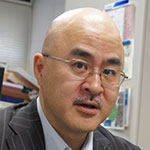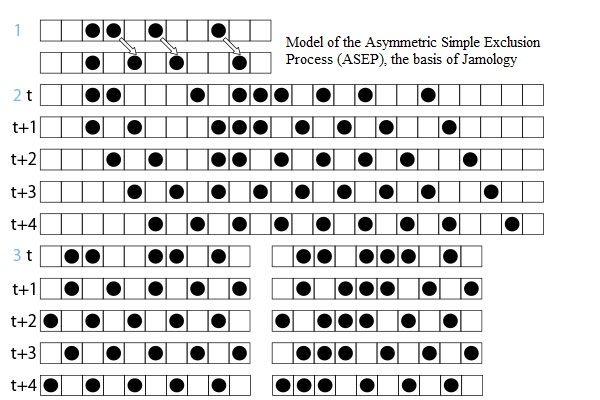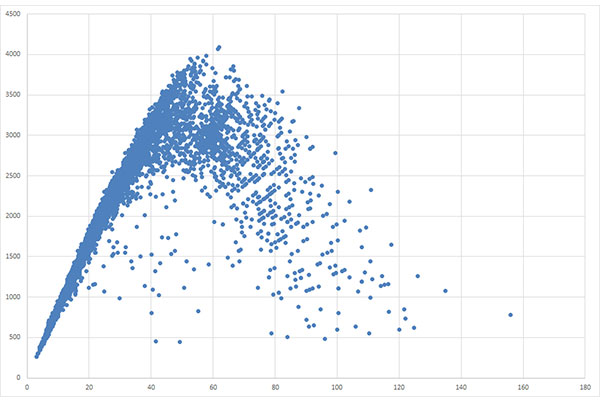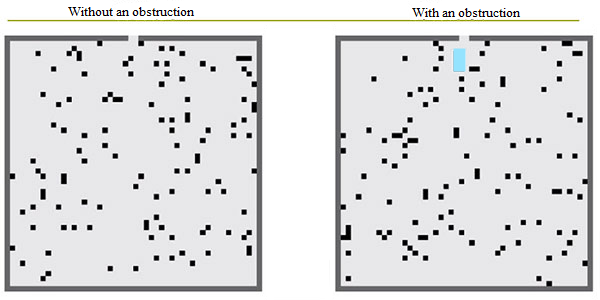Ensuring crowd safety and comfort at the Games

Research, education and legacies related to the sporting event
The Olympic and Paralympic Games will be held in Tokyo for the first time in more than half a century. The University of Tokyo, which is also located in the metropolis, has a long history of involvement with the Games. As you learn about UTokyo’s contributions to this global sporting event, the blue used in the Olympic and Paralympic emblem may very well start to take on the light blue hue of the University’s school color.
| Mathematical Physics |
Ensuring crowd safety and comfort at the Games
Using “Jamology,” a discipline with a basis in mathematics and physics
 Katsuhiro Nishinari Katsuhiro NishinariProfessor, Research Center for Advanced Science and Technology |

If during the Tokyo Olympics you happen to spot a burly, bald-headed middle-aged man sitting quietly in a corner of the stadium observing the other spectators, it may be that he is not a suspicious person or a member of security but Professor Katsuhiro Nishinari.
Nishinari is Japan’s leading expert in the field of what he calls “Jamology,” or the scientific study of crowds and traffic jams. His work ranges far beyond human society to look at ants, the Internet and proteins in the bloodstream. Recently he has also been serving as an advisor to the Organizing Committee for the upcoming Olympics, helping them to compile a crowd management strategy that will ensure the smooth movement of the large numbers of people expected to cram the venues at the Games.
It was around 25 years ago that Nishinari, originally a researcher in fluid dynamics, had the idea that the principles of physics could be used to analyze the movements of crowds and traffic. This interest was spurred by his own dislike of large crowds — he says he can still remember the trauma of falling down in the middle of a crowd in the jam-packed streets of Tokyo’s Shibuya district as a child. In the beginning, however, he didn't hold out much hope of serious success.
“At first, I thought that this kind of research was more or less a waste of time. People have a mind of their own, after all, and start moving for all kinds of reasons. Who knows when someone might suddenly decide to go to the toilet? But after thinking about it a bit more, I realized that the choices might be more limited. In the case of traffic movements on a crowded road, for example, there are really only three options: accelerate, slow down or change lanes.”
Nishinari began to realize that the more crowded a road or location was, the less important human agency was as a factor affecting the choices people could make. At an academic conference overseas, he met another “oddball” who was studying traffic flows using the principles of physics. Nishinari then traveled to Germany for a year of research at the University of Cologne. There he made a surprising discovery.

“I became excited about the idea of working with some students who were interested in ants, studying lines of ants and how they move. We sent some students to India with a professor who was working on ants in that country. When we looked at the footage that came back and started counting the ants, we realized something surprising: there are no traffic jams in the world of ants.”
It turned out that even in the longest lines, the ants maintained a certain distance between themselves, skillfully managing the gap between the ants in front of and behind them. These findings were published in Physical Review Letters, the prestigious physics journal, where they were met with a massive response.
“We learned from nature the importance of opening and maintaining distance. As things get more crowded, both people and cars tend to squeeze up and the distance between them closes. But if you can increase the distance, that allows everyone to move forward without stress. This was a reversal of the common thinking.”
The lessons learned from Nishinari’s research on ants continue to be built on today. The Saitama International Marathon held in December 2019 implemented a smooth rolling start by lining up runners around the outer periphery of the arena before the start of the race, to increase the gaps between the 16,000 runners. This successfully reduced the waiting time for the people at the very back from 23 minutes to 20 minutes after the starting gun.
The time it takes for people or things to pass through a given space naturally gets longer as their number increases. Once reaching a certain stage, the speed of travel drops drastically: a traffic jam. Nishinari says that in the case of pedestrians, a jam occurs when the density goes above 1.8 people per square meter.

Nishinari has helped to develop ways to reduce congestion that are based not on intuition or experience but entirely on science, such as by employing a nudge theory approach in using music and light to guide people in the right direction, as well as through analyzing 500 cases of accidents caused by crowding. With the population of Tokyo expected to double during the Olympics to around 20 million, he is one of the unsung heroes working behind the scenes to ensure that the event comes off without a hitch.
“The best thing is if people enjoy the Games and never know anything about the work we’re doing behind the scenes. That’s the main aim and purpose of these kinds of safety measures. The people who come to watch should never know about the steps being taken to ensure their safety and comfort. The Olympics will mark the coming together of all kinds of wisdom in this area.”
* This article was originally printed in Tansei 40 (Japanese language only). All information in this article is as of March 2020.






